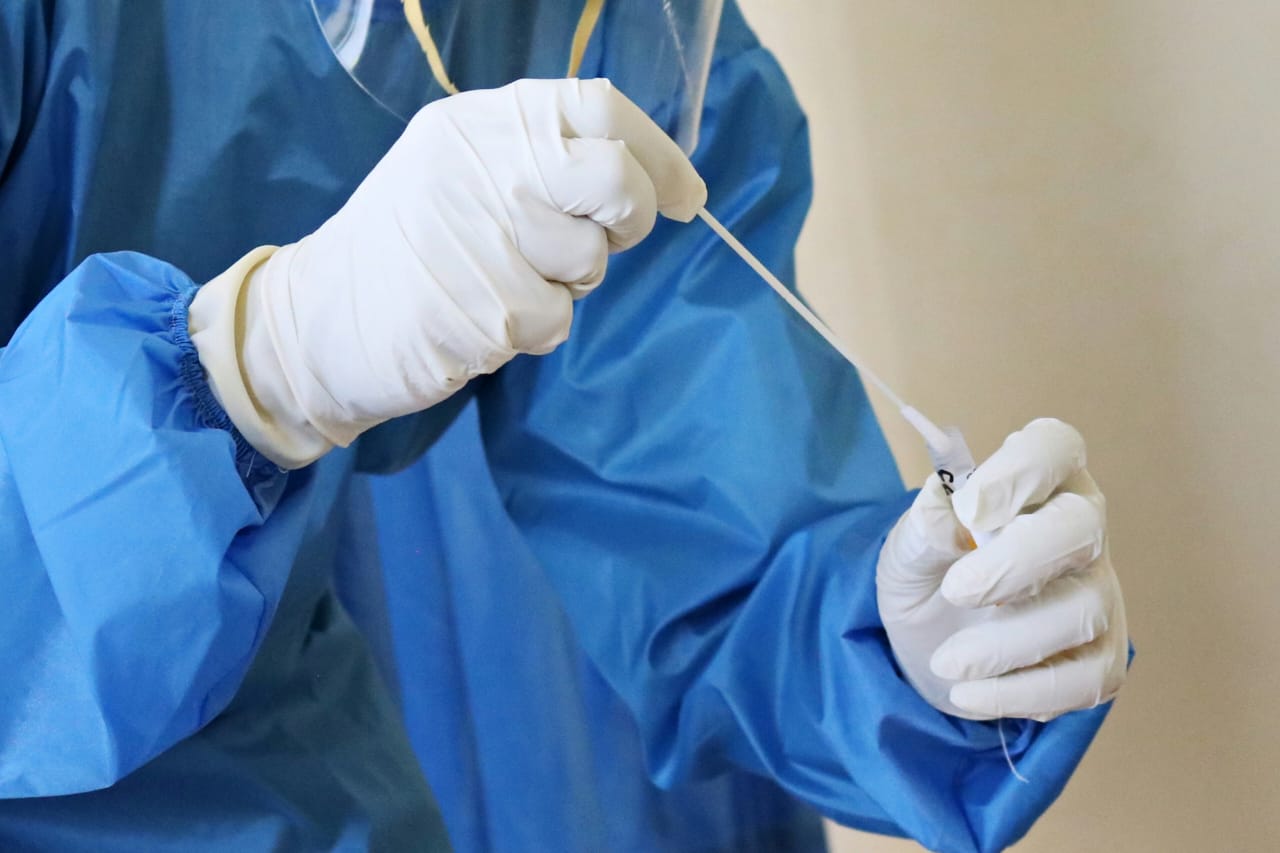PEG-MGF Peptide: Exploring its potential in research and beyond

One of the primary areas where PEG-MGF might hold promise is tissue repair and cellular proliferation.
PEG-MGF, or polyethene glycol-modified mechano growth factor, has gained attention in scientific circles for its intriguing properties and potential implications in various research domains.
Derived from the mechano growth factor (MGF)—a splice variant of the insulin-like growth factor-1 (IGF-1)—PEG-MGF incorporates polyethene glycol to modify its molecular structure. This addition is theorised to impact its stability and bioavailability, presenting a promising tool for investigating cellular processes and tissue dynamics.
More To Read
Molecular structure and theoretical properties
The molecular structure of PEG-MGF is characterised by the covalent attachment of polyethene glycol to the mechanogrowth factor peptide. This modification is believed to improve the peptide's resilience against enzymatic degradation, extend its active half-life, and impact its potential to interact with cellular mechanisms. It has been hypothesised that PEG-MGF may facilitate localised cellular adaptations to mechanical stress, potentially playing a role in tissue maintenance and recovery processes. These properties have sparked interest in their implications across diverse fields of research.
Hypothesised impacts on tissue and cellular research
One of the primary areas where PEG-MGF might hold promise is tissue repair and cellular proliferation. Researchers suggest that the peptide might impact cellular signalling pathways associated with tissue recovery and homeostasis. For example, it is theorised that PEG-MGF might promote the regeneration of damaged muscular tissue fibres following injury, helping to mitigate disruptions contributed to in some way by mechanical stress and oxidative damage.
Investigations purport that PEG-MGF might also impact the migration of cells to areas requiring repair, further supporting tissue maintenance and adaptability. This hypothesised role in cellular recruitment is particularly interesting in studies focused on understanding mechanisms of injury recovery and cellular resilience within the research model.
Speculations in musculoskeletal research
In musculoskeletal research, PEG-MGF is theorised to improve muscular tissue resilience and adaptation. Research indicates the peptide might impact anabolic pathways essential for muscular tissue repair and regeneration. This property may be particularly valuable in exploring ways to address injuries resulting from physical exertion or trauma.
Moreover, PEG-MGF is thought to offer insights into supporting muscular tissue resilience in ageing cells, where muscular tissue loss and reduced strength often pose significant challenges. By examining its hypothesised properties in muscular tissue maintenance, researchers may uncover new avenues for advancing gerontological studies and improving physical performance in older research models.
Potential implications in cardiac research
PEG-MGF's potential relevance extends beyond skeletal muscle studies into cardiac research. It has been theorised that the peptide might contribute to protective mechanisms against cellular stress in cardiac muscle exposed to hypoxic conditions. Additionally, investigations suggest that PEG-MGF may stimulate cardiac stem cell recruitment, potentially supporting regenerative processes following cardiac injury.
These possibilities highlight PEG-MGF as a tool for examining mechanisms underlying cardiac adaptation and resilience, particularly in repairing damage caused by pathological conditions or physical strain. The peptide's hypothesised impact on cardiac remodelling and muscular tissue integrity underscores its importance as a candidate for future research in this domain.
Investigative opportunities in cellular age-related studies
Ageing often leads to progressive tissue regeneration potential and muscular tissue mass decline, collectively called sarcopenia. PEG-MGF has been hypothesised to address cellular age-related issues by promoting muscular tissue repair and maintenance processes. Research involving older cells suggests that the peptide might support improvements in muscle cell structure and function, making it an area of interest for gerontology.
The peptide's potential impact on age-related cellular signalling pathways may offer insights into broader biological mechanisms. As cellular ageing impacts various tissues and organs, PEG-MGF might provide a valuable framework for studying systemic adaptations and resilience in ageing cells.
Role in tissue and regenerative science
Another noteworthy area of interest for PEG-MGF is tissue engineering. This rapidly advancing field explores ways to create functional tissues that might replace or support damaged biological systems. The peptide's theorised impact on cellular proliferation and differentiation makes it a potential candidate for supporting the development of engineered tissues.
Research in tissue engineering might leverage PEG-MGF's properties to improve these constructs' structural and functional integrity. By studying how the peptide interacts with cells during the formation and maturation of engineered tissues, scientists may advance regenerative science and contribute to novel research strategies.
Challenges and perspectives for future research
Despite its promising implications, PEG-MGF remains a subject of ongoing investigation, and challenges associated with its implications in research settings require attention. The peptide's stability, bioavailability, and interaction mechanisms within cellular environments must be further explored to establish its utility. Additionally, developing standardised methodologies for incorporating PEG-MGF into experimental designs will be essential for validating its hypothesised impacts.
Future studies might aim to elucidate the molecular pathways impacted by PEG-MGF and its interactions with cellular structures. By deepening our understanding of these mechanisms, researchers may unlock new implications for PEG-MGF in regenerative science, molecular biology, and other fields of study.
Final thoughts
PEG-MGF peptide represents a fascinating subject for scientific inquiry, offering insights into tissue dynamics, cellular signalling, and regenerative processes. While much remains to be understood about its properties and implications, ongoing research continues to explore its potential to contribute to diverse areas of investigation. For more information about this compound, visit this article.
Top Stories Today












































